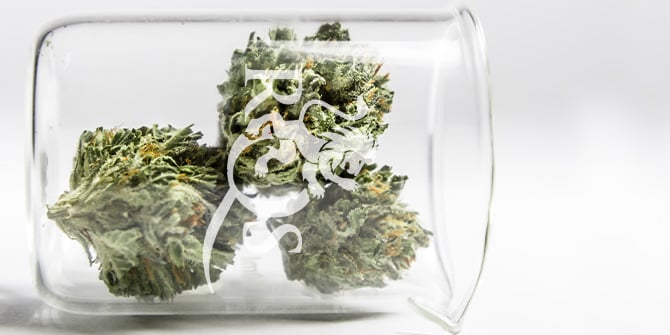A Complete Guide To The Endocannabinoid System
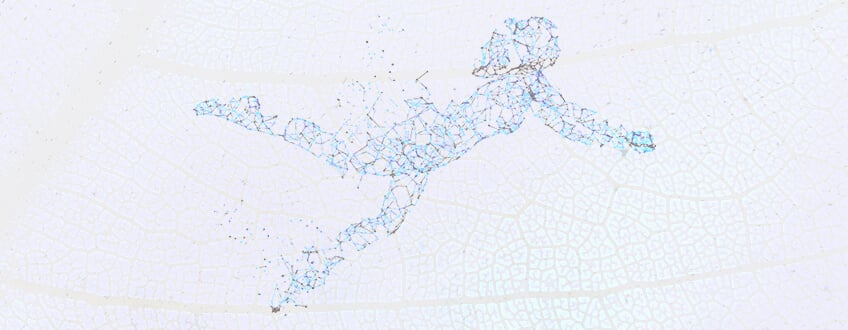
Contents:
- 1. What composes the endocannabinoid system?
- 2. Cannabinoid receptors: Where they’re found and what they do
- 2.a Where are CB1 receptors found?
- 2.b Where are CB2 receptors found?
- 3. Why do we have cannabinoid receptors?
- 4. What is the function of the endocannabinoid system?
- 5. How does THC interact with the endocannabinoid system?
- 6. How does CBD interact with the endocannabinoid system?
- 7. How to stimulate the endocannabinoid system
- 8. The ECS: An emerging master system
Following the discovery of cannabinoids such as THC and CBD, researchers began to wonder how these molecules exerted their unique effects on the human body. Some time after, they discovered a vast network of cellular receptors: the endocannabinoid system (ECS).
This revolutionary finding not only identified how cannabinoids work, but it revealed a sophisticated physiological system that helps the body maintain homeostasis.
WHAT COMPOSES THE ENDOCANNABINOID SYSTEM?
Scientists managed to identify three key elements that make up the endocannabinoid system: endocannabinoids, cannabinoid receptors, and enzymes.
- Endocannabinoids are synthesised in the body and act as signalling molecules by binding to receptors of the ECS. “Endo” means “within” and “cannabinoid” refers to any molecule that activates these receptors. The two primary[1] endocannabinoids in the body are anandamide and 2-AG.
- The endocannabinoid system features two main receptor types: CB1 and CB2. These binding sites appear on many cell types throughout the body. Different cannabinoids bind to, block, or modulate the activity of these receptors. This includes endocannabinoids as well as phytocannabinoids (those found in plants) and synthetic cannabinoids made in a lab. Researchers also consider TRPV1 (transient receptor potential vanilloid one) to be part of the network, as it serves as a binding site for CBD, THC, and anandamide.
- Enzymes are proteins that work to catalyse chemical reactions. The endocannabinoid system features enzymes that both build and break down endocannabinoids. As one of the primary enzymes in the system, fatty acid amidohydrolase (FAAH) works to break down anandamide.
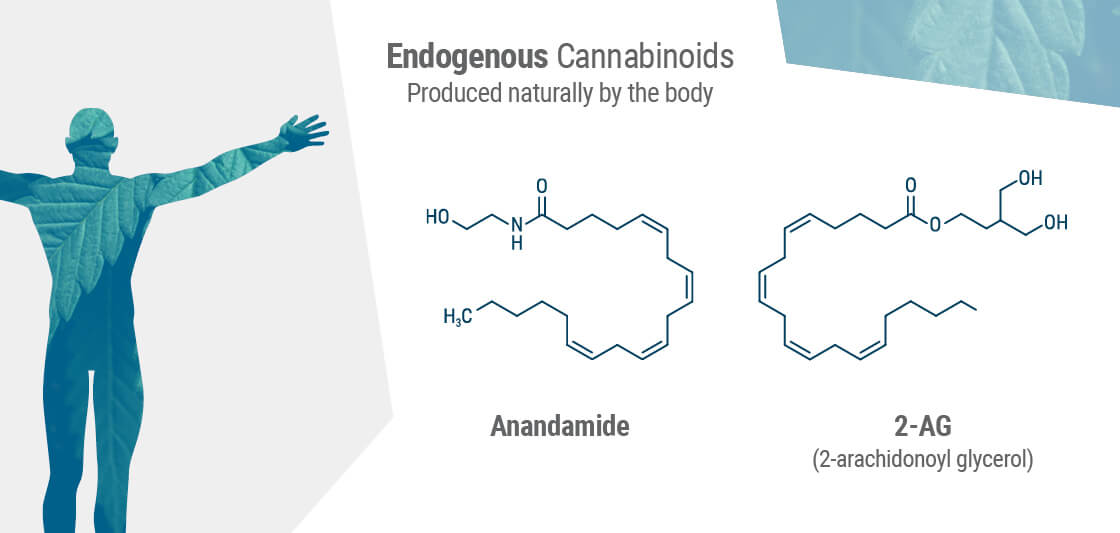
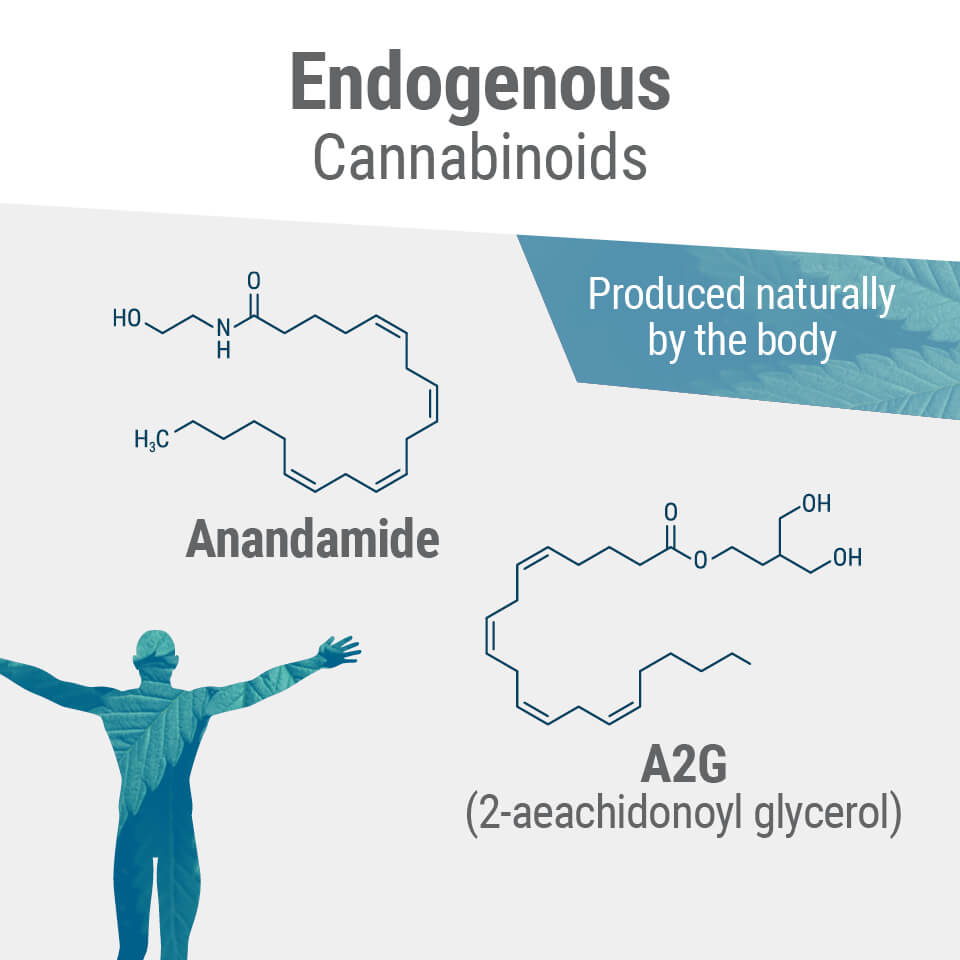
CANNABINOID RECEPTORS: WHERE THEY’RE FOUND AND WHAT THEY DO
Cannabinoid receptors play a fundamental role in the operations of the endocannabinoid system. They help to relay messages from endocannabinoids from cell to cell, and from the outside of cells to the inside. Learn more about their locations and roles below.
WHERE ARE CB1 RECEPTORS FOUND?
CB1 receptors are found largely throughout the nervous system, although they appear in many other areas too. So far, research have identified CB1 receptors in these areas:
- Brain
- Spinal cord
- Fat cells
- Liver
- Pancreas
- Skeletal muscles
- Gastrointestinal tract
- Reproductive system
WHERE ARE CB2 RECEPTORS FOUND?
The lesser-studied CB2 receptors appear in far fewer numbers throughout the body. These sites are found primarily in the immune system, but also appear in lower concentrations in other important areas of the body. Researchers have found CB2 receptors in:
- Immune cells
- Gastrointestinal tract
- Liver
- Fat cells
- Bone
- Reproductive system
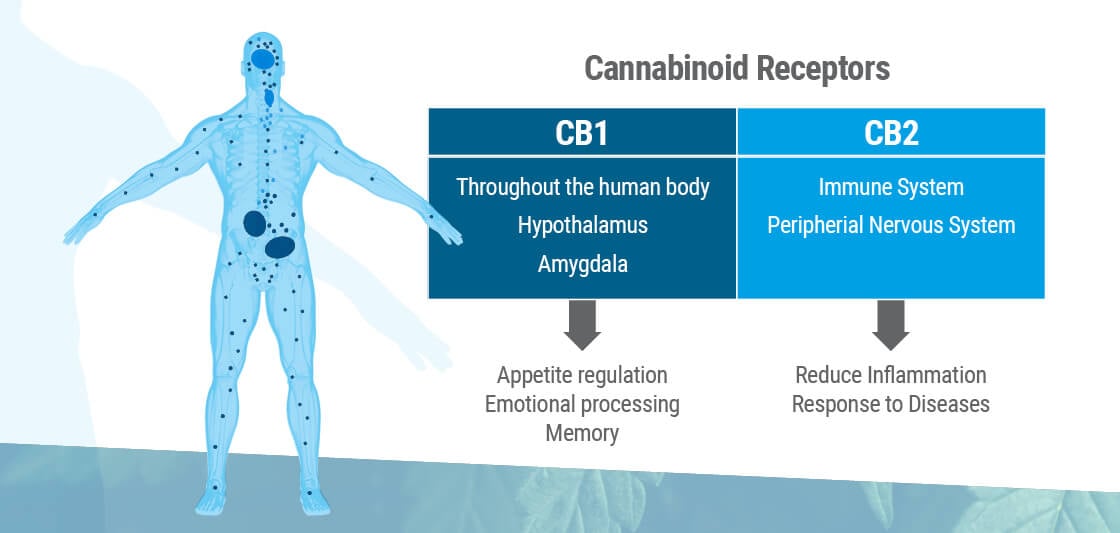
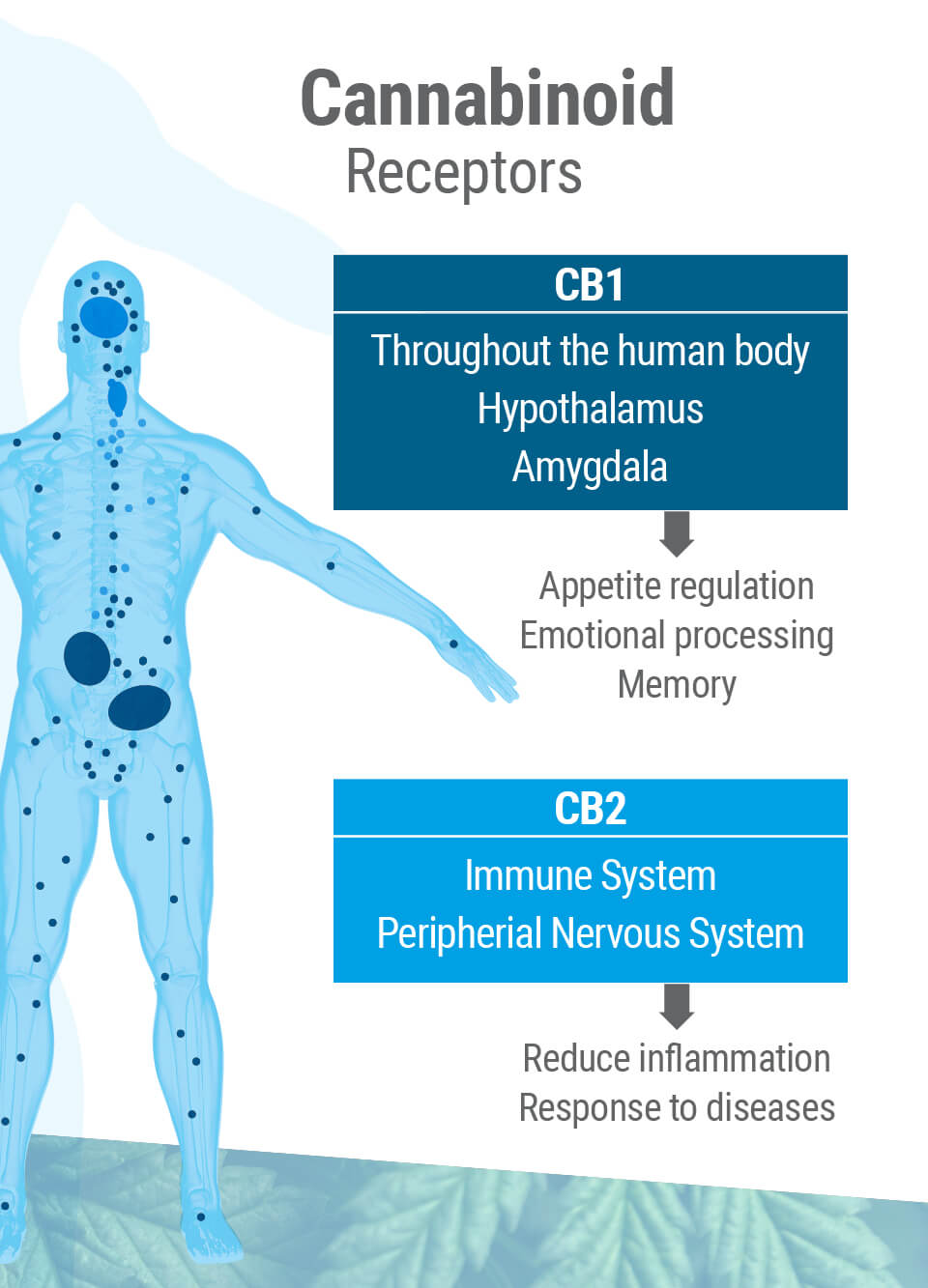
WHY DO WE HAVE CANNABINOID RECEPTORS?
Cannabinoid receptors exist in the membrane of numerous cell types throughout the body. On one side exists the extracellular space, and on the other exists the inside of the cell. The membrane acts as a protective barrier where receptors respond to chemicals outside of the cell.
When a cannabinoid latches onto a cannabinoid receptor, it sends a signal to the inside of the cell that causes a temporary change in cell function. The location of the receptor often hints at what processes it influences.
Cannabinoid receptors act as the middleman between the extracellular space and the inside of the cell. Once activated, cannabinoid receptors set off a cascade, causing cells to change their activity and trigger a collective shift towards a state of balance.
WHAT IS THE FUNCTION OF THE ENDOCANNABINOID SYSTEM?
Cannabis scientists have recognised the endocannabinoid system as a homeostatic regulator[2]. This means it helps to ensure other processes are running smoothly. Neurons even send cannabinoids to receptors backwards across the synaptic space[3] to govern what chemical they want to receive.
You can think of body temperature as an example of homeostasis. If it drops too low or spikes too high, physical functions fail to operate correctly. Our body constantly works to keep us at a safe 36–37°C.
All of our other bodily systems exist in a constant state of physiological equilibrium, and endocannabinoids help to mediate this state as necessary. The endocannabinoid system plays a modulatory role[4] in the following systems:
- Central and peripheral nervous systems
- Endocrine system
- Immune tissues
- Metabolism
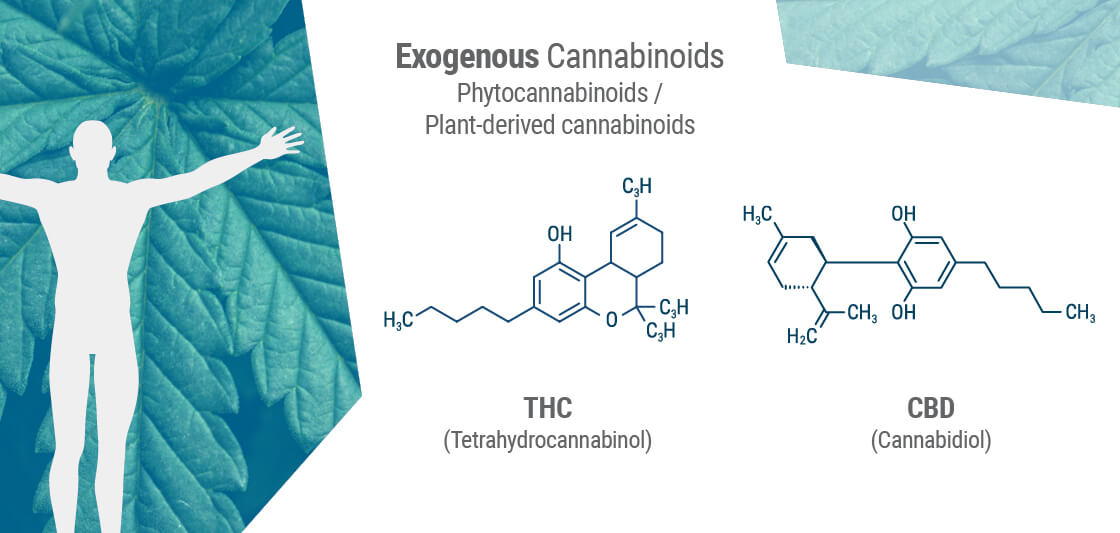
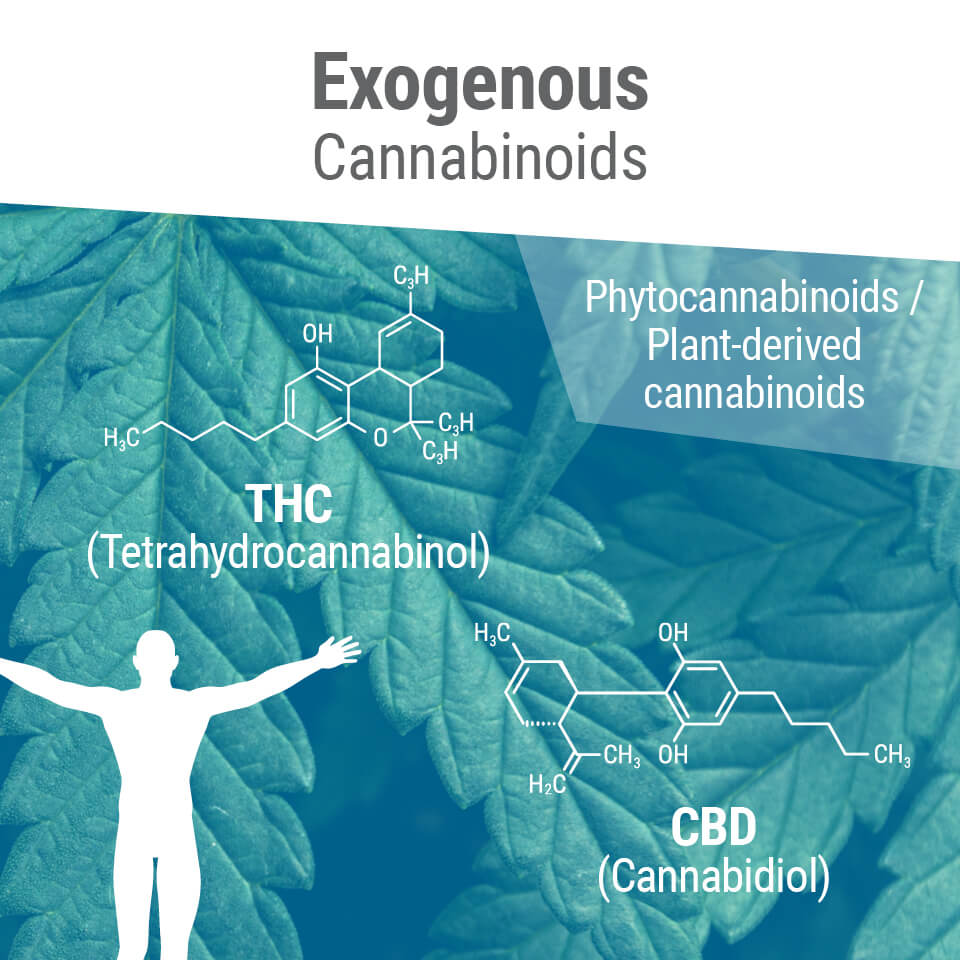
HOW DOES THC INTERACT WITH THE ENDOCANNABINOID SYSTEM?
Phytocannabinoids often share a similar molecular structure with our own endocannabinoids. THC features a strikingly similar shape to anandamide, which enables it to bind to and stimulate both CB1 and CB2 receptors.
Most modern cannabis strains have been bred over the decades to feature THC as the primary cannabinoid. THC achieves its famous altered state of consciousness by binding to CB1 receptors in the central nervous system, leading to a surge in dopamine levels, among other physiological changes.
However, both THC and anandamide only partially activate the CB1 receptor. Scientists have also developed synthetic forms of THC that activate the site to a much higher, but often undesirable, degree. THC also binds to the CB2 receptor, where it acts as a partial agonist.
HOW DOES CBD INTERACT WITH THE ENDOCANNABINOID SYSTEM?
Unlike THC, CBD has a low binding affinity for both CB1 and CB2 receptors. In fact, findings show that CBD works to block CB1 receptors[5] in the presence of low doses of THC, possibly reducing its psychoactive effects.
CBD also binds to the TRPV1 receptor, a site more or less included in the endocannabinoid system. Activation of this receptor by a number of molecules influences various physiological processes.
CBD might also indirectly stimulate CB1 and CB2 receptors by increasing serum levels of anandamide. This is because the cannabinoid appears to inhibit the enzyme FAAH, which normally breaks down anandamide, making CBD an anandamide reuptake inhibitor.
Breeders have invested large amounts of time developing high-quality CBD-rich cannabis strains to meet consumer demand. To learn all there is to know about these cultivars, check out this article.
HOW TO STIMULATE THE ENDOCANNABINOID SYSTEM
The endocannabinoid system plays a fundamental role in keeping human physiology in balance. But what happens if the endocannabinoid system is thrown out of whack? Research suggests that everybody has an optimal “endocannabinoid tone”[6], a term that describes the volume of cannabinoids produced by and circulating around the body.
A lack of endocannabinoids might give rise to a state known as clinical endocannabinoid deficiency (CECD). So, how can we keep our endocannabinoid system in check? Well, there are a few simple and natural ways to boost the ECS:
- Phytocannabinoids: As we’ve addressed above, cannabinoids such as THC and CBD can influence cannabinoid receptors. Research suggests they might come in handy in cases of low endocannabinoid tone.
- Aerobic exercise: Running and cycling might be a simple way to **boost levels of anandamide[7] in the brain. Have you ever felt that sensation of euphoria after a long run? Known as the “runner’s high”, experts once attributed the sensation to endogenous opioids. It turns out anandamide could be at the root of such nice feelings. The very word “anandamide” means “bliss” in Sanskrit, after all.
- Omega fatty acids: Could low endocannabinoid tone boil down to diet? Maybe. The body requires omega-3 fatty acids to synthesise endocannabinoids[8]. Foods high in omega-3 include fish, hemp seeds, walnuts, flaxseeds, chia seeds, and caviar.
- Caryophyllene: A terpene found in many culinary herbs (and cannabis), caryophyllene also acts as a dietary cannabinoid, binding directly to the CB2 receptor. This mechanism of action[9] allows the molecule to soothe the nerves and raise the mood. Rosemary, black pepper, hops, cloves, and oregano all contain high levels of the molecule.
- Other dietary cannabinoids: Sure, cannabis produces over 100 cannabinoids. However, other plants[10] also produce members of this chemical family. Here are some of the most popular:
- Truffles: anandamide (CB1, CB2)
- Echinacea: alkamides (CB2)
- Maca: macamide (CB1)
- Kava: yangonin (CB1)
- Chilli peppers: capsaicin (TRPV1)
- Black pepper: piperine (TRPV1)
- Ginger: gingerol and zingerone (TRPV1)
- Cacao: N-oleoylethanolamine and N-linoleoylethanolamine (inhibit FAAH)
THE ECS: AN EMERGING MASTER SYSTEM
The endocannabinoid system has revealed itself to be paramount to human physiology. This overarching system governs many processes in the body, so taking steps to look after your ECS can only be a wise idea. We look forward to future research that continues to unveil the inner workings of this biological masterpiece.
- Introduction to the Endocannabinoid System https://www.phytecs.com
- Endocannabinoid System Acts as a Regulator of Immune Homeostasis in the Gut - PubMed https://pubmed.ncbi.nlm.nih.gov
- Retrograde signaling at central synapses via endogenous cannabinoids | Molecular Psychiatry https://www.nature.com
- [The Role of the Endocannabinoid System in the Regulation of Endocrine Function and in the Control of Energy Balance in Humans] - PubMed https://pubmed.ncbi.nlm.nih.gov
- Cannabis Pharmacology: The Usual Suspects and a Few Promising Leads - ScienceDirect https://www.sciencedirect.com
- Clinical Endocannabinoid Deficiency Reconsidered: Current Research Supports the Theory in Migraine, Fibromyalgia, Irritable Bowel, and Other Treatment-Resistant Syndromes https://www.ncbi.nlm.nih.gov
- A runner’s high depends on cannabinoid receptors in mice https://www.ncbi.nlm.nih.gov
- Omega-3 fatty acids fight inflammation via cannabinoids -- ScienceDaily https://www.sciencedaily.com
- β-Caryophyllene, a CB2 Receptor Agonist Produces Multiple Behavioral Changes Relevant to Anxiety and Depression in Mice - PubMed https://pubmed.ncbi.nlm.nih.gov
- Beyond Cannabis: Plants and the Endocannabinoid System - ScienceDirect https://www.sciencedirect.com
Categories
Medical Marijuana


























